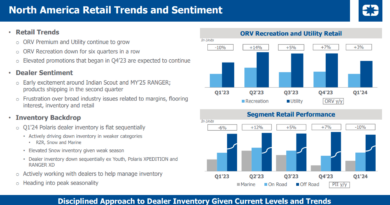Increasing productivity by improving motivation skills
One of the characteristics of a good manager is the ability to motivate almost any capable employee to perform at a high level. However, as noted in my last column, relatively few businesses have good managers. So how do some folks manage to move the performance needle with a wide variety of people?
To better understand this, we have to recognize basic truths about most of our managers. For one, few of them have had management training that touches on motivational techniques. Also, most managers have one style of management they use, and they don’t adapt that style to different personality types. Finally, many managers focus on a limited range of things to motivate people. These often include money and/or threats of unemployment as incentives. Surprisingly, not everyone is motivated by these two things.
Harvard Business School professor Teresa Amabile and psychologist Steven Kramer recently asked hundreds to maintain diaries about their motivation at work. After analyzing 12,000 entries, they found employees were motivated and highly productive when they felt they were making daily progress toward a meaningful goal. When they interviewed 600 managers about what they thought was the single-most important motivator for employees, 95 percent of them got the answer wrong!
If we can’t motivate them, we may go through a number of employees until we can find ones who respond to the manager’s motivational style and incentives offered. The fact is, many of these underperformers could become overachievers, if they were managed correctly.
The solution comes in three parts: 1) Provide incentives to motivate that particular individual; 2) Set meaningful, short-term goals, and celebrate successes; 3) Learn to manage people the way they want to be managed.
1. Motivational Factors
I did a column a while back that discussed techniques for uncovering what motivates each employee. It is a fact that money is not the top motivator for most people. You can ask them what their top three motivators are, or you can supply a list of motivational factors, such as:
Having job security
Receiving special recognition
Making good money
Family situations/needs
Having an opportunity for career growth
Possessing a job that keeps me interested
Knowing that I’m doing a good job … feeling self-worth
Ask them to choose their top three motivators. Develop rewards or incentives that drive their motivational factors. Be sure to redo this exercise periodically.
2. Meaningful, Realistic Goals
Setting realistic, short-term goals is an effective technique for driving response. When combined with rewards based on motivational factors, this can be powerful for stimulating performance. Make these meaningful goals and make the effort to celebrate their successes.
What is a “meaningful” goal? Think about what kind of goal will be important to them and create better productivity for the dealership. Provide them with a few options to see which resonate with them. I recommend you follow the S.M.A.R.T. method of goal development:
Specific (e.g., “Increase sales by XX percent”)
Measureable (You can’t manage what you can’t measure.)
Action-driven (What actions will drive the improvement?)
Realistic (If it is not achievable, you’re wasting everyone’s time.)
Time-bound (By what date are you going to hit this goal?)
3. Adapting Management Style
Managing people the way they want to be managed is a novel concept, but it’s no different than selling to people the way they want to be sold. There are four primary management styles, and they each have their place. There isn’t room to discuss these, but there is plenty of information about management styles on the web (or in one of our classes).
There are also four primary behavioral (or personality) styles. It is important to recognize the dominant style for each of employee, so you can adapt your management style to one that will achieve the best results from each person.
Amiable: This friendly, talkative, family-oriented person generally appreciates team management, specific guidance and direction.
Analytical: This detail- and task-oriented person requires specific explanations of what is desired. If you can’t explain the “why” and how they fit into the big picture, they will often not perform well.
Driver: This bottom-line-first, no-small-talk person generally wants to get after it right away. Strong leadership is essential, or you will get run over.
Expressive: This outgoing, over-the-top person wants to stand out and needs compliments. Find a way for them to be recognized in front of their peers, and they may be one of your best performers.
Steve Jones is senior projects manager at Gart Sutton & Associates. He has worked in the powersports industry for more than 30 years, for dealerships and manufacturers, and as a consultant and trainer. Contact him at steve@gartsutton.com.








